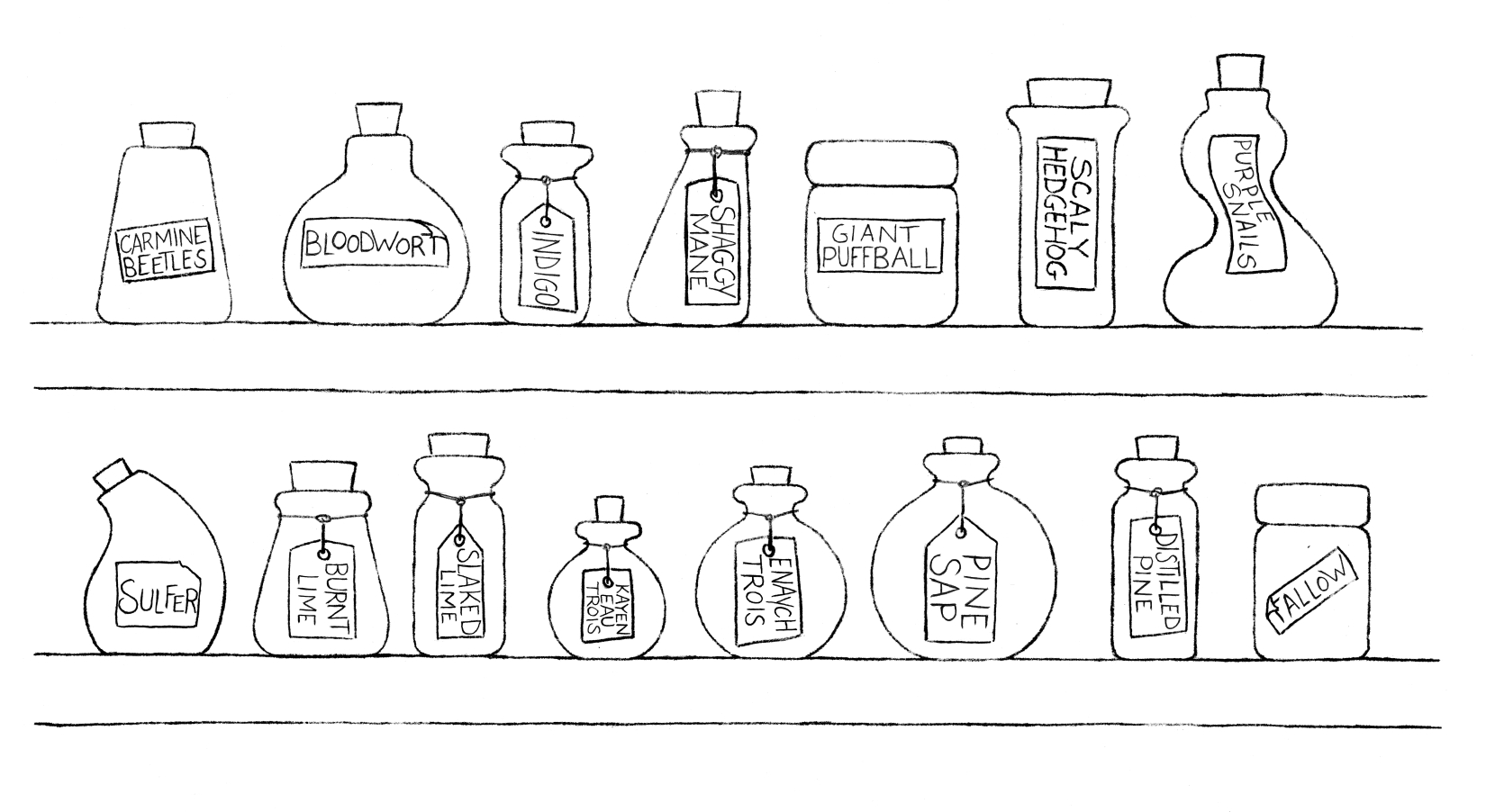|
Mom’s Shelf Ingredients:Carmine Beetles - These very tiny scarlet-red beetles were eating the oak tree in Kara’s back yard. Having been collected, washed, dried in the sun and put in a bottle, they can be crushed and used as food coloring or in make-up or ink.Bloodwort - This red-orange dye was made from a resin that grows inside small bumps on the roots of Bloodwort, a flowering plant native to North America. The raw resin is very caustic to skin and can cause burns, possibly having been used by Native Americans as a wart remover. Indigo - This dark blue dye came from pressing, drying and powdering the fermented leaves of an indigo plant. Its relatives include woad and dyer’s knotweed. Shaggy Mane - This gray-green dye was made from a mushroom also known as Inky Cap. The color of the dye can be altered by either cooking it in an iron pot or mixing in some ammonia.Giant Puffball - This dark red dye was made with either Dyemaker’s False Puffball, an inedible mushroom which makes a rich red to golden brown to black dye, or Purple Spore Puffball, an edible mushroom which makes a rust red dye.
|

